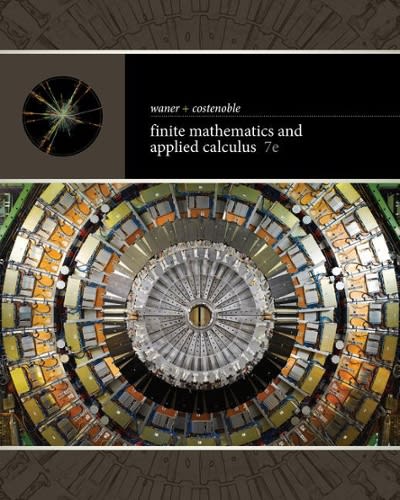Answered step by step
Verified Expert Solution
Question
1 Approved Answer
A finite population consists of four elements: 6 , 1 , 4 , 2. (a) How many different samples of size n = 2 can
- A finite population consists of four elements: 6, 1, 4, 2. (a) How many different samples of size n = 2 can be selected from this population if you sample without replacement? (b) List the possible samples of size n = 2. (c) Compute the sample mean for each of the samples given in part (b). (d) Find the sampling distribution of x. (e) If all four population values are equally likely, calculate the value of the population mean . (f) Do any of the samples listed in part (b) produce a value of x exactly equal to ?
- Suppose a random sample of n = 5 observations is selected from a population that is normally distributed, with mean equal to 8 and standard deviation equal to 0.35. (a) Give the mean and standard deviation of the sampling distribution of x. (Round your standard deviation to four decimal places.) mean standard deviation (b) Find the probability that x exceeds 8.3. (c) Find the probability that the sample mean x is less than 7.5. (Round your answer to four decimal places.) (d) Find the probability that the sample mean deviates from the population mean = 8 by more than 0.4. (Round your answer to four decimal places.) You may need to use the appropriate appendix table to answer this question.
- Suppose studies indicate that the earth's vegetative mass, or biomass for tropical woodlands, thought to be about 35 kilograms per square meter (kg/m2), may in fact be too high and that tropical biomass values vary regionallyfrom about 4 to 56 kg/m2. Suppose you measure the tropical biomass in 100 randomly selected square-meter plots. (a) Approximate , the standard deviation of the biomass measurements (in kg/m2). (b) What is the probability that your sample average is within two units of the true average tropical biomass? (Use your answer from part (a) in your calculations. Round your answer to four decimal places.) (c) If your sample average is x = 27.75, what would you conclude about the overestimation that concerns the scientists?
- The number of wiring packages that can be assembled by a company's employees has a normal distribution, with a mean equal to 19.7 per hour and a standard deviation of 1.1 per hour. (a) What are the mean and standard deviation of the number x of packages produced per worker in an 8-hour day? (Round your standard deviation to three decimal places.) meanpackages standard deviationpackages (b) Do you expect the probability distribution for x to be mound-shaped and approximately normal? Explain. (c) What is the probability that a worker will produce at least 160 packages per 8-hour day? (Round your answer to four decimal places.)
- The number of defective 60-watt lightbulbs found in samples of 100 bulbs selected over 25 days from a manufacturing process was recorded. Assume that during this time the manufacturing process was not producing an excessively large fraction of defectives. A p chart for this data shows an upper control limit of 0.0848, a centerline of 0.032, and a lower control limit of 0. During a given week the number of defective bulbs in each of five samples of 100 were found to be 7, 8, 2, 6, and 11. Is there reason to believe that the production process has been producing an excessive proportion of defectives at any time during the week?
- A population consists of N = 5 numbers: 1, 2, 3, 5, and 6. It can be shown that the mean and standard deviation for this population are = 3.4 and = 2.07, respectively. (a) Construct a probability histogram for this population.
- A bottler of soft drinks packages cans in six-packs. Suppose that the fill per can has an approximate normal distribution with a mean of 11 fluid ounces and a standard deviation of 0.3 fluid ounces. (a) What is the distribution of the total fill for a case of 24 cans? (Round your standard deviation to four decimal places.) mean standard deviation (b) What is the probability that the total fill for a case is less than 260 fluid ounces? (Round your answer to four decimal places.) (c) If a six-pack of soda can be considered a random sample of size n = 6from the population, what is the probability that the average fill per can for a six-pack of soda is less than 10.6 fluid ounces? (Round your answer to four decimal places.) You may need to use the appropriate appendix table to answer this question.
- Suppose a random sample of n = 25 observations is selected from a population that is normally distributed with mean equal to 109 and standard deviation equal to 15. (a) Give the mean and the standard deviation of the sampling distribution of the sample mean (b) Find the probability that x exceeds 114. (Round your answer to four decimal places.) (c) Find the probability that the sample mean deviates from the population mean = 109 by no more than 3. (Round your answer to four decimal places.)
Step by Step Solution
There are 3 Steps involved in it
Step: 1

Get Instant Access to Expert-Tailored Solutions
See step-by-step solutions with expert insights and AI powered tools for academic success
Step: 2

Step: 3

Ace Your Homework with AI
Get the answers you need in no time with our AI-driven, step-by-step assistance
Get Started


